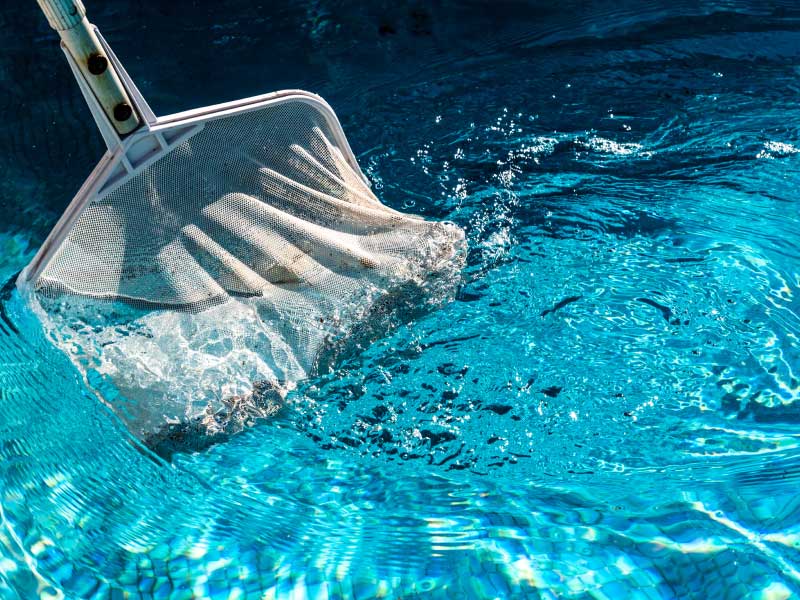Phosphate in swimming pool water – the root of algae problems
Phosphate is fast becoming recognized as the major cause of algae in swimming pools. This summer has seen some of the highest recorded phosphate levels in swimming pools across Australia and New Zealand.
Some of this high level of phosphate has been attributed to summer drought related dust fallout, and an increase in the phosphate levels of several common fertilizers. For many years phosphate and nitrate runoff from farms has been blamed for the deterioration of our many lakes and waterways, now the problem has crossed into our swimming pools.
For pool owners, the biggest concerns from high phosphate levels are rapid chlorine consumption and stubborn, repeat algae problems. In order to maintain healthy water quality, it is important to remove phosphate from the pools water. Once it has been removed, regular maintenance can prevent the level from becoming a problem again and also aid in better chlorine performance and efficiency, reduced chlorine consumption, and no algae problems.
Phosphate and nutrients are required by all living organisms, including algae, to survive and flourish. It is commonly accepted that increasing the chlorine level and reducing the phosphate in swimming pool water results in less algae problems.
But how are they related, and what can be done to remove phosphate from swimming pool water? Phosphate is introduced to pool water from a variety of sources including runoff from lawns and gardens, pool fill water such as bores, dust, suntan oils and leaves. With time, all of these sources will cause a build-up and increase in the concentration of phosphate in the pools water. Algae spores are continually being introduced to the pool attached to dust and leaves. They only require nutrients and water to quickly multiply and become a threat to the pools water quality due to rapid consumption/destruction of available chlorine.
For decades chlorine has been used not just as a pool sanitizer, but it is also effective as a short lived algae killer. Traditional treatment has included "shock" dosing the pool with three to five times its regular daily chlorine dose; this is effective at killing off almost all visible algae. While this effectively kills the algae, it does not do anything to address the condition that allowed the algae to flourish in the first place. When the chlorine level returns to normal to algae will begin growing again. Therefore preventing the algae from recurring requires that the chlorine concentration is maintained at the higher level, the water is removed from the pool, or water conditions are changed to become less favourable for algae growth.
Traditionally, phosphate levels have been ignored, while attempting to remove dead algae by filtration. Given wet algae weighs 1000 times more than the phosphate needed to feed it, this is not the most effective way to do this. Also as the algae are trapped in the filter, it releases a certain amount of trapped phosphate back into the water. The most effective traditional treatment is "super chlorination" or ten times the normal daily dose, effectively bleaching the algae white and killing it. This is followed by a "floc" with aluminium salts, before vacuuming the settled dead algae to waste. Up until recently, none of the traditional treatments for algae targeted the real cause of the algae problem.

While chlorine was effective as a treatment for visible algae, prevention was not addressed. In swimming pools there are two effective chemical treatments for removing phosphate from swimming pools: lanthanum compounds and aluminium compounds. In sewage and effluent treatment ponds, iron compounds are used effectively, however these are undesirable in swimming pools due to the staining they cause. Aluminium compounds are more effective in pools with a high level of phosphate build-up, in the range of greater than 1000ppb (parts per billion); however they require vacuuming to waste after treatment. They will effectively remove phosphate down to 500ppb, but cannot remove phosphate below 100ppb which is required for effective algae control. Aluminium compounds are relatively cheap, and therefore suitable for removal of a large percentage of phosphate accumulated in the pools water. Lanthanum products are a potent and specific phosphate remover. They are best suited to maintaining low levels of phosphate in pools where performance and convenience are important. They are easier to use and apply than aluminium products and do not require vacuuming to waste after their application. However they are more expensive and best suited for pools with less than 2000ppb accumulated phosphate. One of the main advantages of lanthanum is that its ability to form lanthanum phosphate is not affected by the pools water balance. A small amount of lanthanum compound will cause the phosphate level to drop below 100ppm, while concentrations of below 10ppb are easy to maintain. Lanthanum compounds work by lodging in the pools filter media or cartridge, slowly dissolving to lightly coat the filter media. As phosphate rich water passes over the lanthanum crystals, they chemically attach themselves to the phosphate – forming lanthanum phosphate. Lanthanum phosphate is not suitable as a nutrient, and binds into larger particles so it can be removed by the pools filter medium. Large quantities of lanthanum can be stored in the filter without clouding the pools water. To conclude, phosphate removal is the secret to maintaining algae free, quality swimming pool water, while allowing other chemicals to work at their optimal level. Additional algae insurance, is the use of a preventative, "long life" copper based algaecide to be used in conjunction with regular testing for phosphate. While phosphate will accumulate in a pool naturally, there are steps pool owners can take to prevent excessively high levels. – Do not allow runoff from gardens and lawns to enter the pool – Remove leaves from the pool regularly and promptly – Apply a lanthanum compound phosphate remover regularly – Have the pools water tested by a professional.

